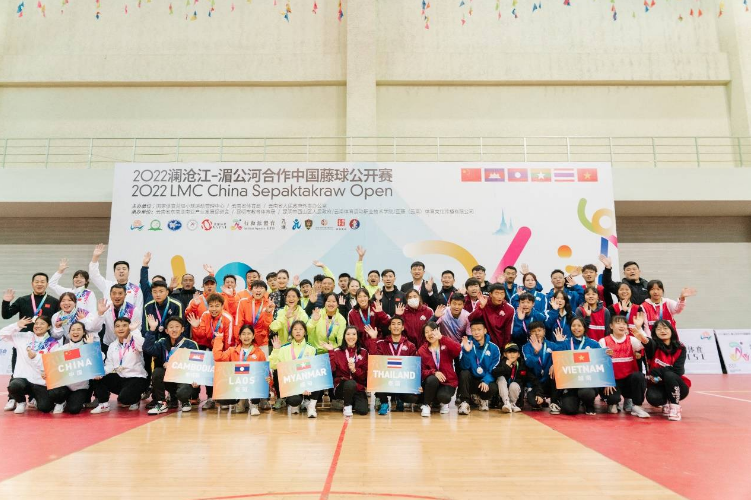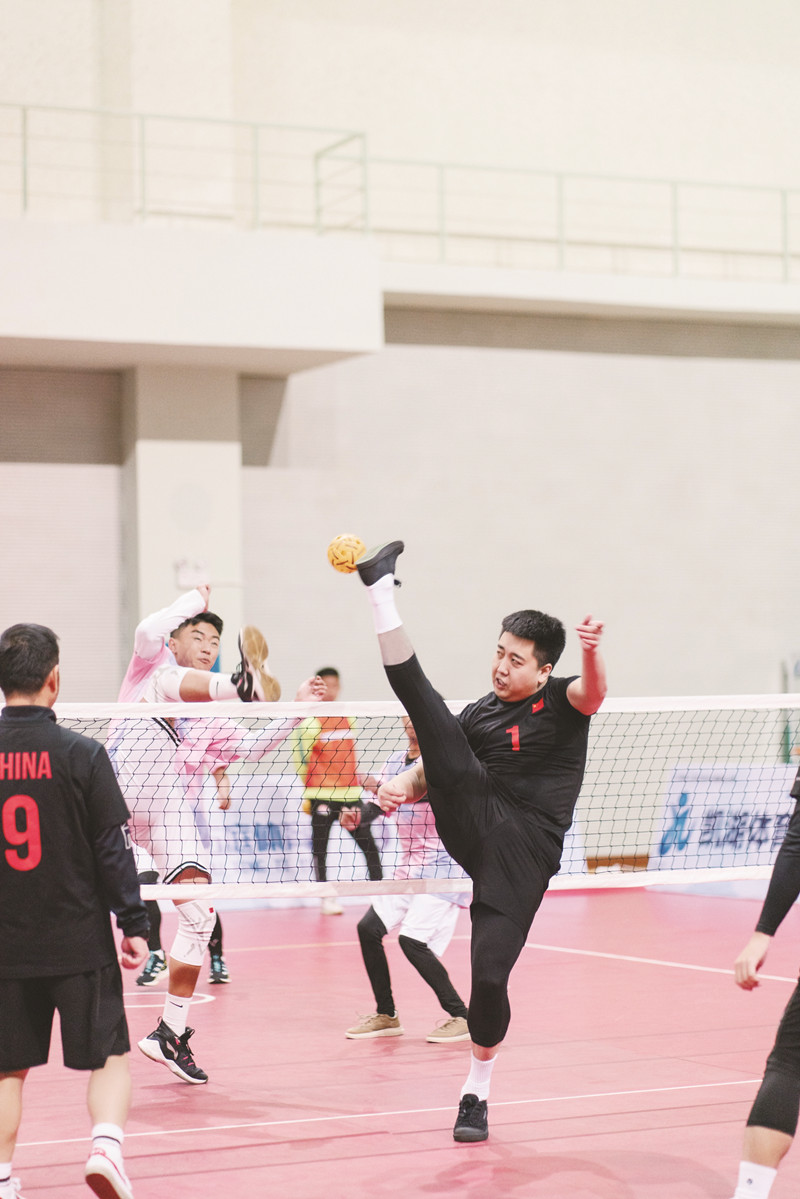Eric's Insight: Sepatakraw event bolsters LMC friendship
The annual Lancang-Mekong Cooperation (LMC) China Sepatakraw Open was held in Kunming Hongta Sports Center, Yunnan province in the wake of the new year of 2023.

The 2022 Lancang-Mekong Cooperation (LMC) China Sepatakraw Open is held in Kunming, Yunnan province. Photo/Yunnan Daily
Sepaktakraw is a traditional sport that originated from Southeast Asia. In the woven-ball games, players are allowed to only use their feet, knee, chest, and head instead of their hands to pass and hit the ball.
Known as Sek Dai in Cambodia, Kataw in Laos, Chinlone in Myanmar, Takraw in Thailand and Da Cau in Vietnam, Sepaktakraw resembles native sports of other ASEAN countries, and it is also said to be related to Cuju (蹴鞠) in China.
Gathering kick-volleyball lovers from the six countries of Cambodia, Laos, Myanmar, Thailand, Vietnam and China, the two-day sepatakraw event has enhanced the people-to-people bonds in the Mekong River basin.
Chanxay SOULIPHONE, the youngest member of the Lao team, has been an international student living in Yunnan, China for years, but he still felt excited for it was the first time for him to have a Sepatakraw game in the new year.
"I’ve made friends with some Chinese players, who introduced me Yunnan cuisine with great enthusiasm. Like Kunming, Vientiane is a place with blue sky and fresh air,” said Chanxay, hoping the new Chinese friends could have a chance to visit Laos with him.
Xiao Dexin, a member of the China team, has just made friends with Chanxay SOULIPHONE. Having already got to know something about Vientiane from his new Lao friend, Xiao is expecting to travel to Vientiane from Kunming via the China-Laos Railway.

The 2022 Lancang-Mekong Cooperation (LMC) China Sepatakraw Open is held in Kunming, Yunnan province. Photo/China Sports Daily
An ancient Chinese football game similar to Sepatakraw, Cuju is the earliest known recorded game of football, and it is a competitive game that involves kicking a ball through an opening into a net without the use of hands.
Descriptions of the game date back to the Han dynasty. In a Chinese military work from the 3rd-2nd century BC, Cuju was described as an exercise. Also played in other LMC countries like Vietnam, Cuju has long been a medium for cultural exchanges in the Lancang-Mekong river basin.
Yin Keyue is a Myanmar native studying languages in China, and she helped in translation between the Chinese and Myanmar languages during this sepatakraw event.
Having jotted down what she saw in bilingual notes, Yin also published the friendly scenes on her social media accounts. She said Myanmar has long had a brotherly friendship with China. In the past few years, the LMC cultural and sports activities have facilitated her understanding to China.
“What I learned in the past is more about the history and traditional culture of China. Through the sepatakraw event, I felt the Chinese vitality in development, and the positive changes have boosted my confidence to go on studying in China,” said Yin.

The 2022 Lancang-Mekong Cooperation (LMC) China Sepatakraw Open is held in Kunming, Yunnan province. Photo/Yunnan Daily
Cuju flourished in China during the Song Dynasty (960-1279) due to social and economic development, extending its popularity to every class in society, but it began to decline during the Ming Dynasty (1368-1644) due to neglect.
As traditional sports like Sepatakraw increasingly serve as a medium for people-to-people bonds under the LMC mechanism, the Chinese Cuju may also thrive again.
(The writer Eric Wang Shixue is an English editor with the Mekong News Network based in Kunming, Yunnan province. The view in the article does not necessarily represent that of Yunnan Gateway.)








